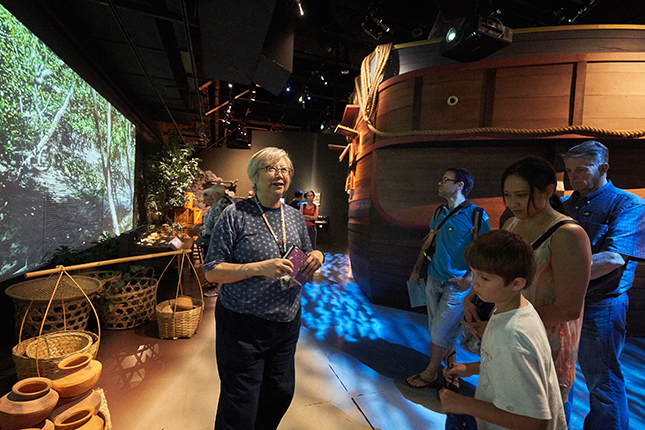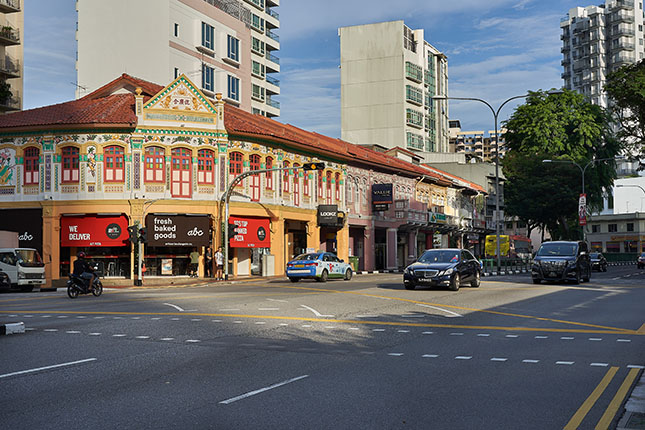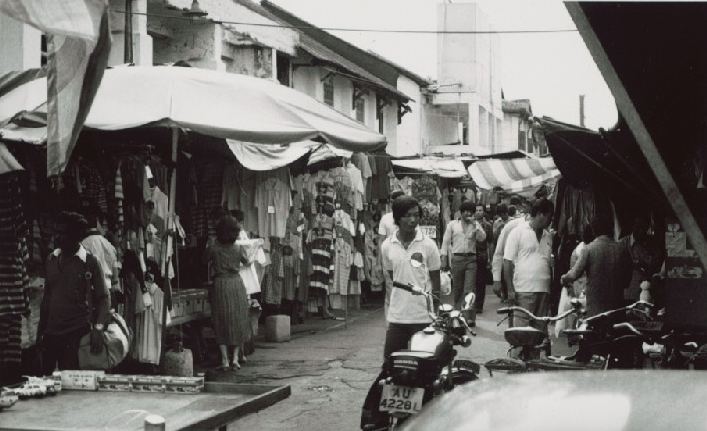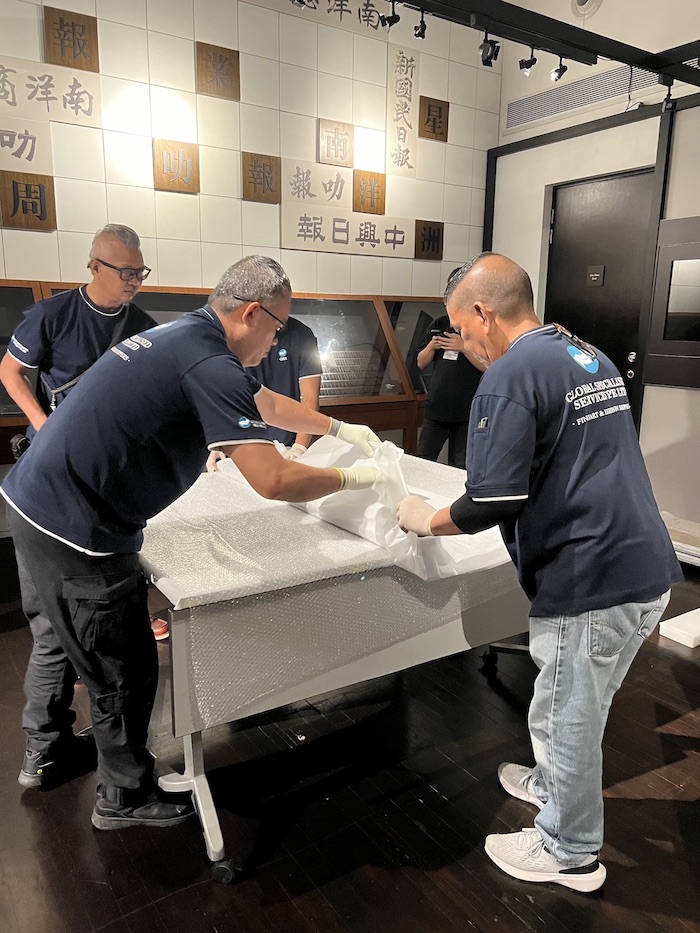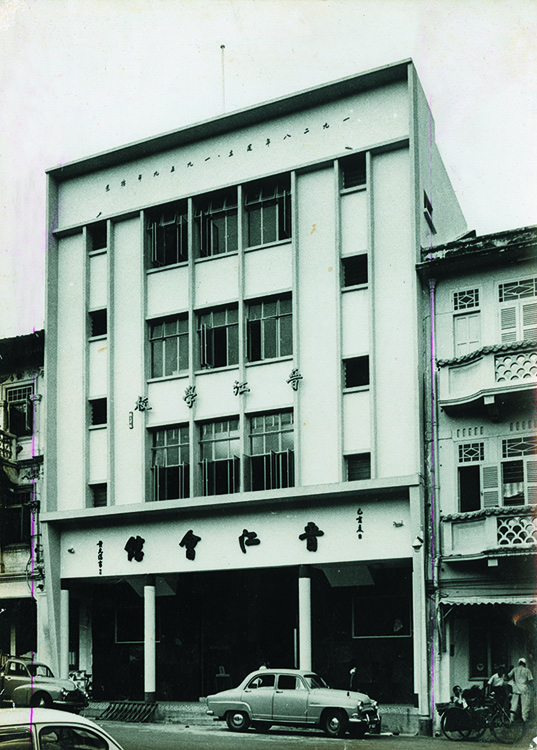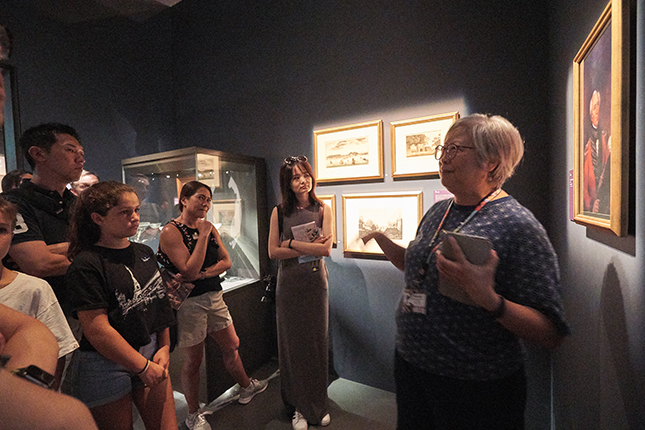
“Don’t get too caught up with the historical figures’ personalities! Study the facts and dates too,” Christine van der Ven’s history teacher used to chide her back in her teens at school.
Christine certainly learnt that lesson well. Her vast knowledge was undeniable as she effortlessly peppered her National Museum of Singapore tour with precise dates and details from start to finish. Her fascination with the rich and colourful personalities of historical characters has clearly not waned.
“Did you know, David Marshall only wrote with a green pen?” she asks a group. This is just one of many fun facts Christine has at her fingertips, keeping visitors engaged with rich and vivid details that they would never have been able to glean from reading the museum labels.
Vivid scenes and stories
Whether it was Raffles, Farquhar, rickshaw pullers or Chettiars, Christine paints such vivid and compelling pictures of their lives that visitors feel, for a moment, they are in those people’s shoes.
Sitting in a mock-up of a typical living room belonging to a Chettiar from Tamil Nadu decades ago, Christine describes the minute details of his everyday life. She walks visitors through everything –– the tools he used, how he might have sat at his workstation, how to decode the scribbles in his journal.

Christine’s years of experience and close relationship with the National Museum –– her very first museum –– allows her to tell wonderful personal anecdotes about it.
For example, the National Museum houses a beautiful gold armlet from the 14th century which bears a plaque of repoussé work depicting the Javanese kala. The kala motif is a protective symbol, found at the entrance of Javanese temples dating from the 8th to 14th centuries. Christine shares that during a major renovation, the armlet was kept in a temporary display location where a fire broke out. Rumour had it that the sacred kala was not happy to have been moved to the temporary display! Thankfully, there have been no further calamities since it found its permanent exhibit in the newly refurbished National Museum.
Moving through a section on William Farquhar, Christine teaches the correct pronunciation of “Farquhar” –– “fah-ker”. This came as a surprise to many in the tour group, who had been saying it wrongly all these years. Christine herself had only learnt how to pronounce it accurately at the National Museum.
Still as exciting
The training docents have to undergo is very rigorous, requiring a high level of commitment. “But it’s all worth it”, she shared. “It’s very rewarding.”

“It’s never the same tour, twice,” explained Christine. Fresh information she learns at a new Asian Civilisations Museum exhibition, for example, equips her with new stories to tell on her tours at other museums. Furthermore, she takes care to tailor each of her tours to the demographic of her group. Attendees are so varied –– tourists, elderly, young children, secondary school students, the list goes on. Christine always tries her best to focus on details and fun facts that her listeners might identify with and find interesting.
Asked if her friends and family share her enthusiasm for history or volunteering, Christine laughs and says, “Most of them think I’m weird, putting in so much work for free!” But, the friendships Christine has forged with fellow docents is priceless because that brings her happiness and fulfillment, day in and day out. Many of Christine’s co-volunteers have become travel buddies and lifelong friends, and she is very grateful to have found fellow enthusiasts who share her passions. “We’re history nerds together,” she chuckles. “We never run out of things to talk about.”
By Chew Wei Shan & Nurudin Saladin




